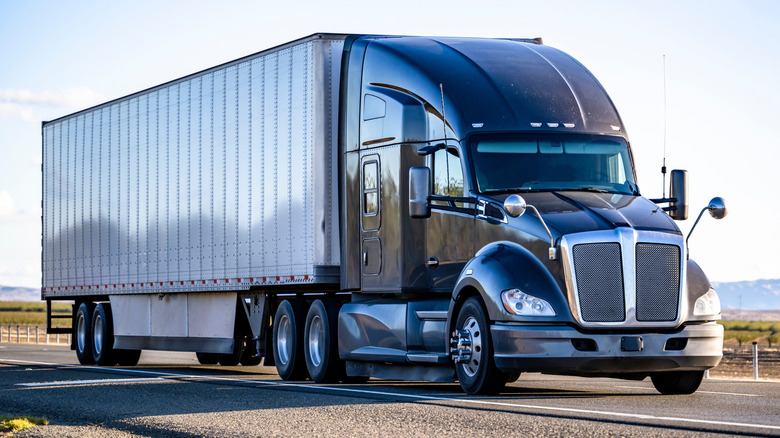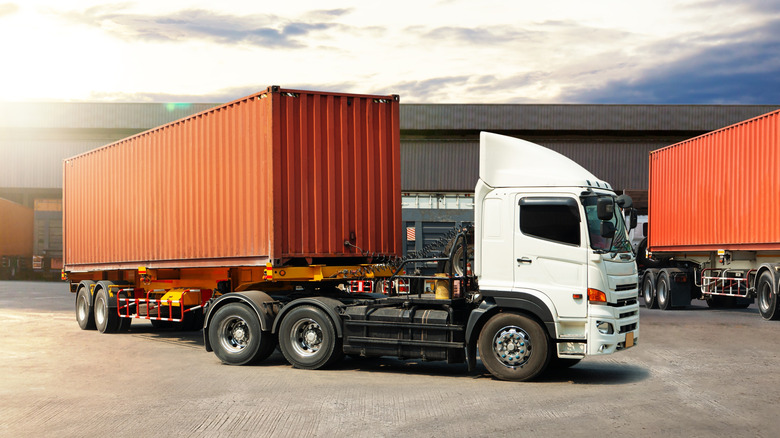Why Are Semi-Trucks Also Called Tractor Trailers?
We've probably all heard the term "tractor trailer" used when talking about massive semi-trucks. The two names get tossed around so often that they've become interchangeable, begging the question of how that came to be in the first place. The reason semi-trucks are also called tractor trailers comes down to how they're built.
A typical setup includes two main parts: The tractor in front, which houses the engine and driver, and the trailer in back, which carries the cargo. The "semi" part refers to the trailer, which doesn't have front wheels of its own and relies on the tractor to support it. Put it all together and you've got a semi-tractor pulling a semi-trailer. Over time, it got shortened to "semi-truck" or simply "tractor trailer," depending on who you're talking to.
Because the tractor and trailer are separate, there's a huge range of trailer types that can be paired with a single truck. This mix-and-match setup is a big reason why the term "tractor trailer" stuck. From dry vans to lowboys and everything in between, drivers can switch trailers to suit different cargo needs without changing the entire rig. The name itself speaks to the truck's ability to tackle different jobs with a single tractor up front.
Tractor trailers revolutionized long haul transport
Semi-trucks date back to the late 1800's, when Cleveland carmaker Alexander Winton needed a way to deliver cars to customers without driving them across long distances first. His solution was to attach a small cart to the back of a modified car and use it to haul another. It could only carry one vehicle, but it kicked off a new way of thinking about transportation. Even though Winton moved on from the design, others saw its potential and ran with it.
Inventors and entrepreneurs kept refining the concept well into the 1900's. Custom builds led to wider uses, clever design tweaks made trailer hookup easier, and new hauling methods helped move more cargo in fewer trips. Those improvements opened the door for popular semi-truck brands like Mack, Peterbilt, and Freightliner, all of which brought new innovations; from tougher engines to lighter, more compact designs. By the time the 1950s rolled around, trucks were everywhere.
But everything changed in 1956 with the Federal Highway Act, which paved the way for thousands of miles of interstate highways and made long-distance hauling easier than ever. Standardized shipping containers also came onto the scene, transforming how freight moved by allowing seamless transfers between trucks, trains, and ships. Together, these breakthroughs helped shape the tractor trailer into the force that helps power America's economy today.

